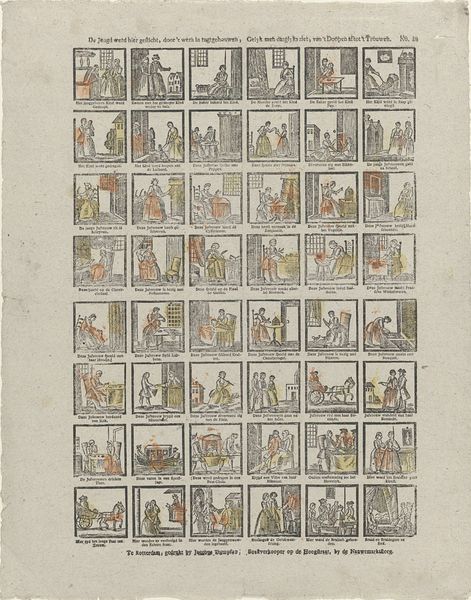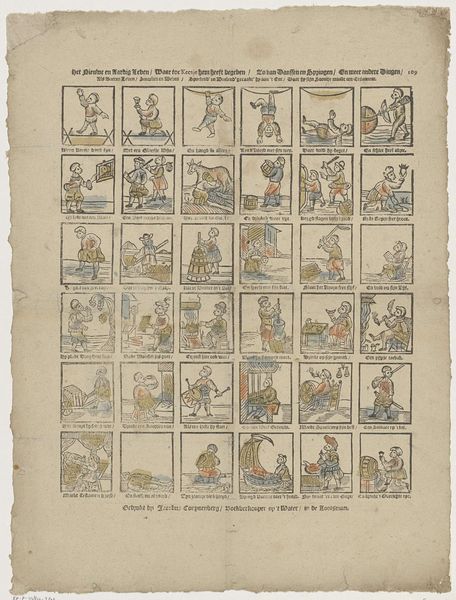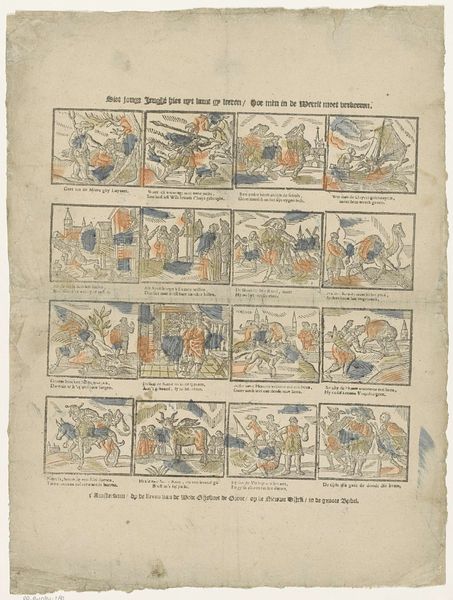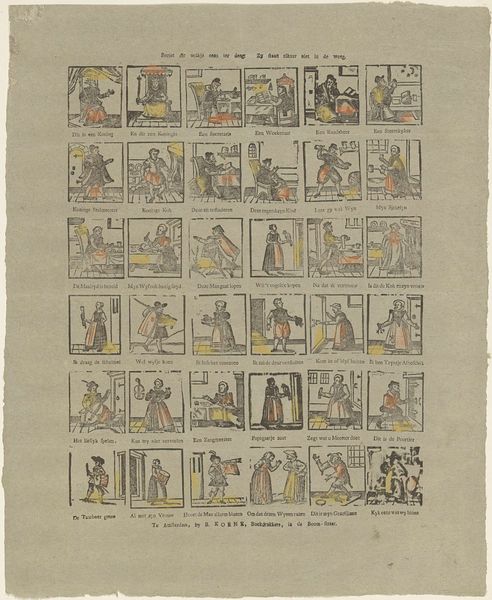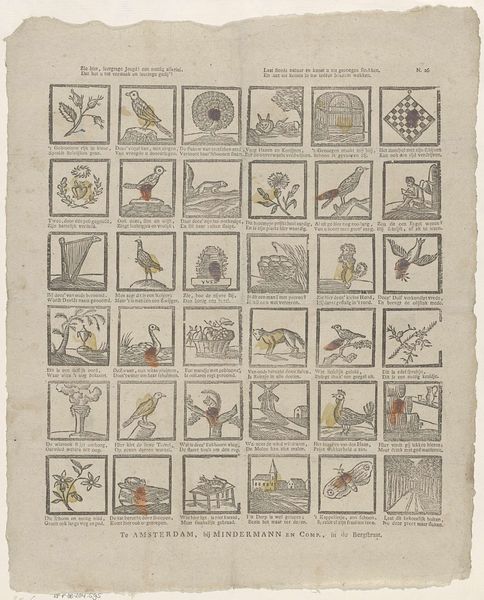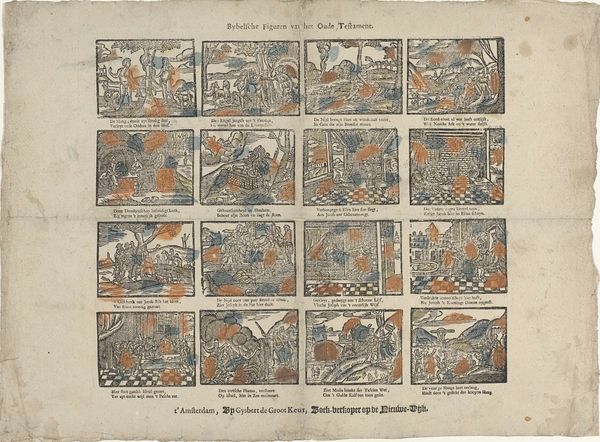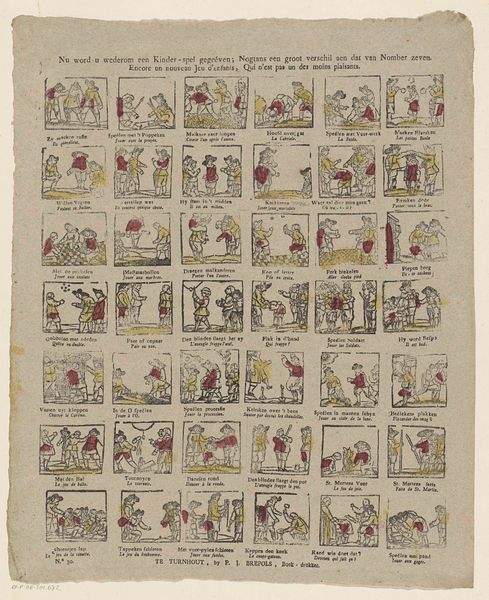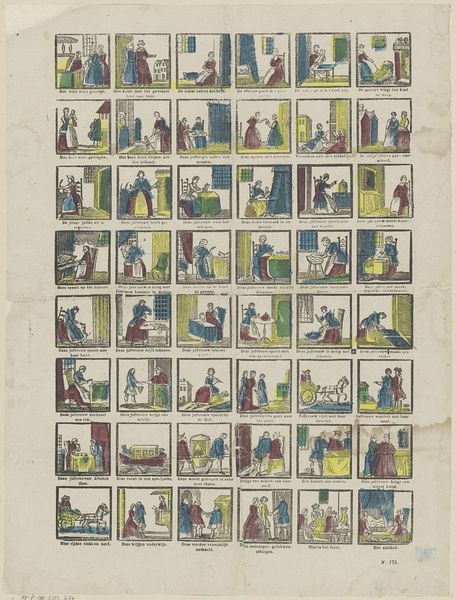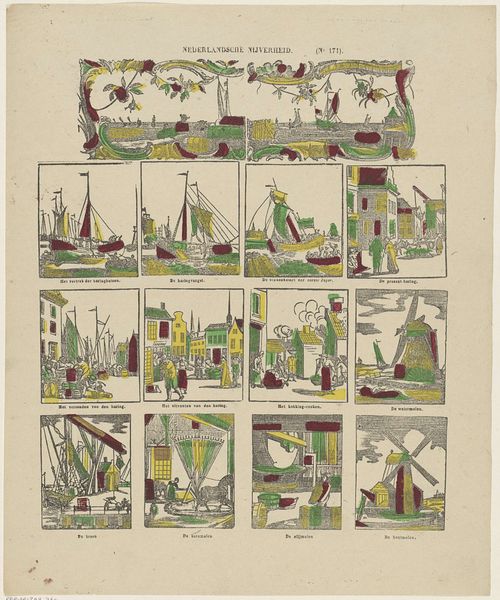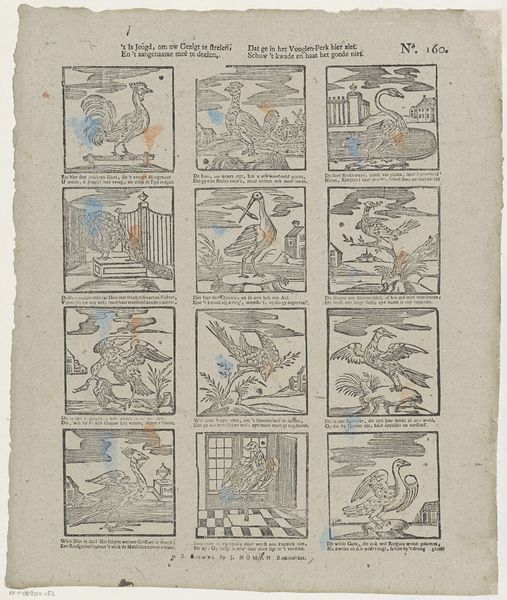
Dimensions: height 362 mm, width 491 mm
Copyright: Rijks Museum: Open Domain
Curator: Before us we have the print, “Inhoudsopgave van de serie Honderd aspecten van de maan," from 1892 by Nagai Sogaku. It’s a work from his series “One Hundred Aspects of the Moon.” Editor: At first glance, it looks almost like a quilt. Little squares of color and text, all neat and tidy. It has an intricate order to it, but on a scale that seems intimate. Curator: The formal arrangement of the calligraphic inscriptions and the miniature landscape elements contained within each square demands our attention. Note how each unit plays with visual harmony; the deliberate placement of ink and color creates a unified whole. Editor: I am particularly struck by the process. Each miniature tableau had to be meticulously carved into the woodblocks and then printed in succession to build each square and the whole page itself. That represents countless hours of skilled labour, thinking about the relationship between design and making. Curator: Yes, and if we consider the ukiyo-e tradition within which this piece exists, the very essence lies in its graphic rendering. Each character, each brushstroke is a carefully rendered form. I can detect various techniques like bokashi shading giving certain scenes atmospheric qualities. Editor: Ukiyo-e were originally accessible objects; relatively affordable to a wide audience, not only were the scenes depicted democratized by showing people in contemporary society, the access to images also democratized art making for different classes. So to produce such an intricate print also represents something of a tension. Curator: It's that very tension, I think, that makes Sogaku’s compositions so intriguing. How he masterfully balances the popular appeal with profound formal control and depth. Editor: Exactly. It's a reflection on not only the image, but the cultural values inherent in the art production itself. Thinking of who this series was designed to appeal to enriches my experience with this print. Curator: I find that reflecting on Sogaku’s command of graphic elements—form, composition, balance—draws me closer to understanding how deeply contemplative image-making can be. Editor: And reflecting on the skilled artisans, through labouring the ink, wood and printing tools reminds me that there is both labour and inherent values in all material productions of art.
Comments
No comments
Be the first to comment and join the conversation on the ultimate creative platform.
